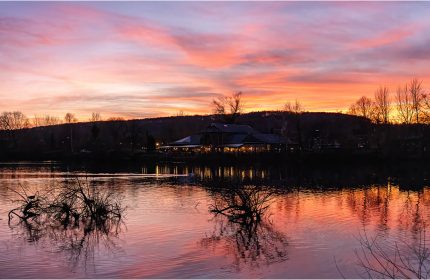The celestial displays to witness this summer if you missed the Northern Lights
Aside from the aurora, our solar system will put on an array of shows in the months ahead
A super-powered solar storm last week resulted in a surprise appearance of the aurora borealis across the UK.
But those who slept through the light show – extremely rare at these latitudes and this time of year – shouldn’t be too disappointed. Over the next few months, there are many more celestial displays in store.
Some don’t even require a dark sky…
Perseid meteor showers

Witnessing the Perseid shower in Huddersfield
When: Mid-July to late-August.
What: This annual sky-of-night spectacle features thousands of bright streaks and fireballs shooting through space. Easily visible with the naked eye, it occurs when the Earth passes through a trail of dust particles left by a large comet called Swift-Tuttle. At its peak, 100 meteors per hour will shower above us with the highest concentration expected on August 12. These appear to radiate from the constellation Perseus – hence the name – but in reality can appear anywhere in the sky. Viewing conditions are tipped to be very good this year, with a quarter Moon occurring at the shower’s peak.
Where: As long as there’s sufficient darkness and little light pollution, it’s possible to witness showers in the northern hemisphere down to the mid-southern latitudes. Focussed primarily on seeing the show, On The Go have has an eight-day tour to the Wadi Rum desert in Jordan. From £1,255pp, excluding flights. Departs August 8. Visit onthegotours.com.
The midnight sun

A midnight sunset in Skagafjordur, Iceland
When: The best months are June and July.
What: Although typically seen in the Nordics, the Northern Lights weren’t even visible during recent solar storms. That’s because these latitudes are now ruled by another astro colossus: the sun. Between May and August (depending on how far north you go), it’s possible to witness the midnight sun – when the sun shines for 24 hours a day, dipping above the horizon and refusing to ever set.
Where: Any of the Nordic countries are a good bet. Best Served Scandinavia has a seven-day trip to Norway’s Lofoten Islands, where there are plenty of options for late night hikes and all-hours boat rides. From £2,070pp, including flights. Visit best-served.co.uk.
Supermoons

A supermoon above London’s Shard building
When: September 18 and October 17.
What: Contrary to popular belief, the moon’s orbit around Earth is not a perfect circle. Due to tidal and gravitational forces, it moves in an irregular pattern with its apogee and perigee — the closest and farthest approaches from Earth — changing every lunar month. A supermoon occurs when the moon is at its closest approach and in its full phase and fully illuminated by the sun, making it appear larger than usual. According to experts, the closest superman will rise the closest supermoon this year will rise on October 17 at 11:26am. GMT.
Where: The best supermoons are observed at night. On September 17, a super harvest moon is set to rise above the UK at 2.34am GMT. Northumberland and Dartmoor have some of the darkest skies in the UK.
The Press Association
Latest posts by The Press Association (see all)
- BBC to air two-part Call The Midwife Christmas special - December 23, 2024
- 6 mind sports to exercise your brain and keep you sharp - December 20, 2024
- Quiz: What classic Christmas food or drink are you? - December 20, 2024
- Leftover turkey and watercress pie - December 20, 2024
- Catherine and William choose family shot for Christmas card photograph - December 19, 2024




















